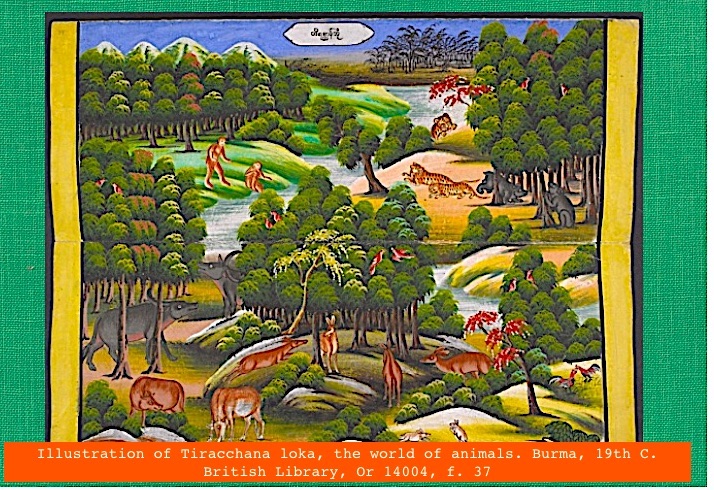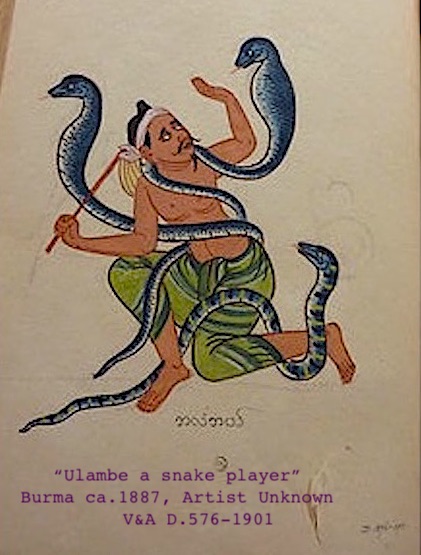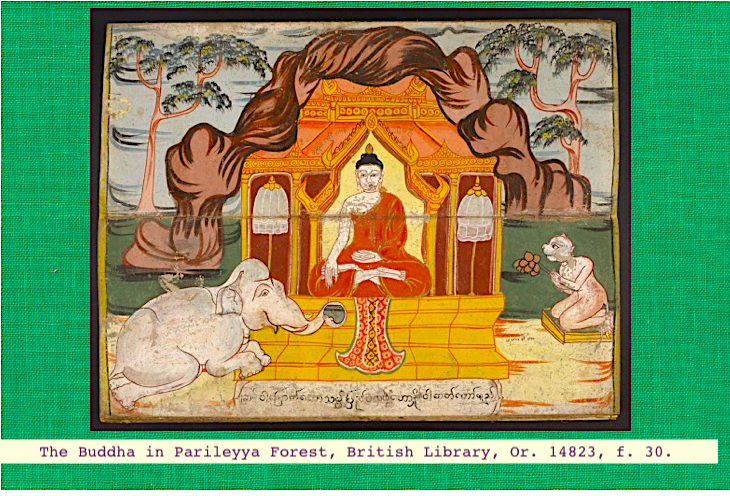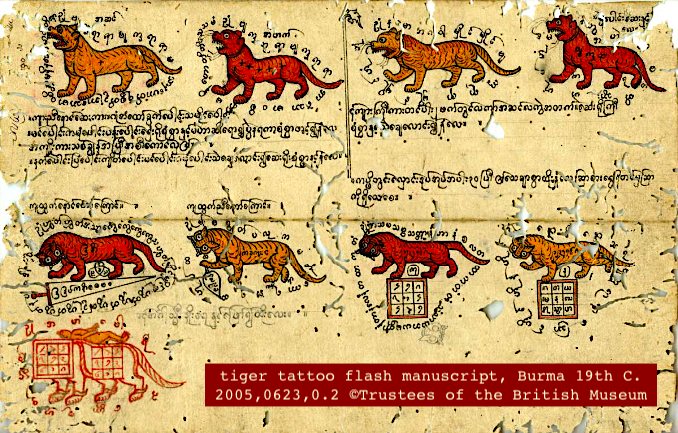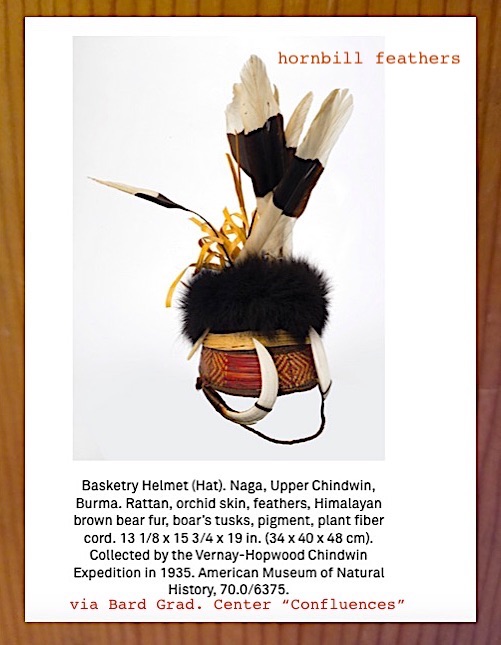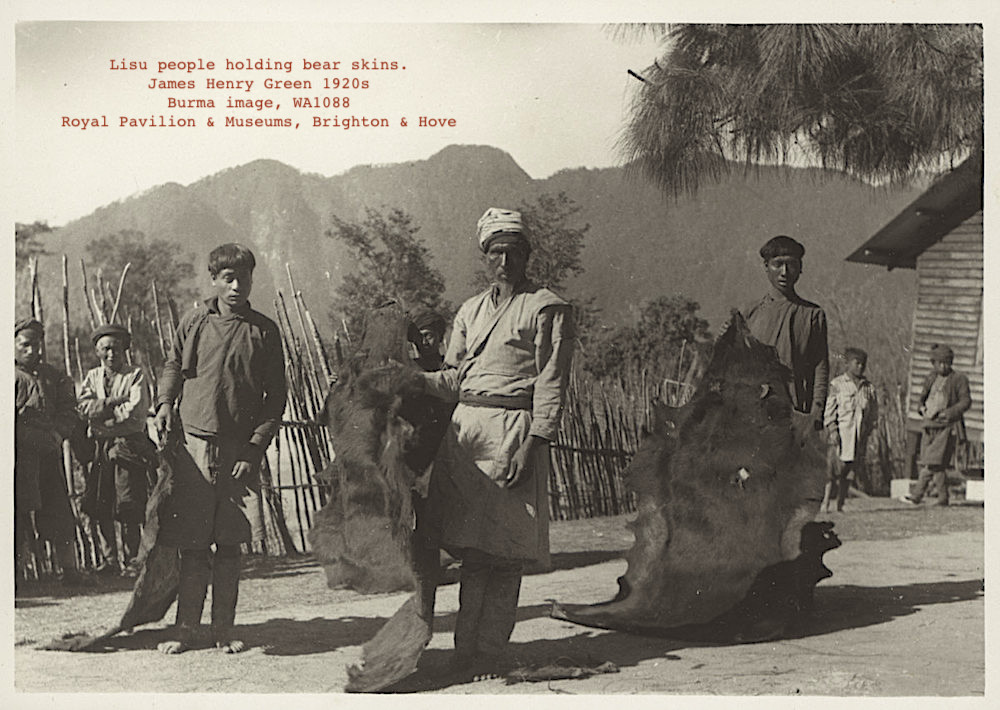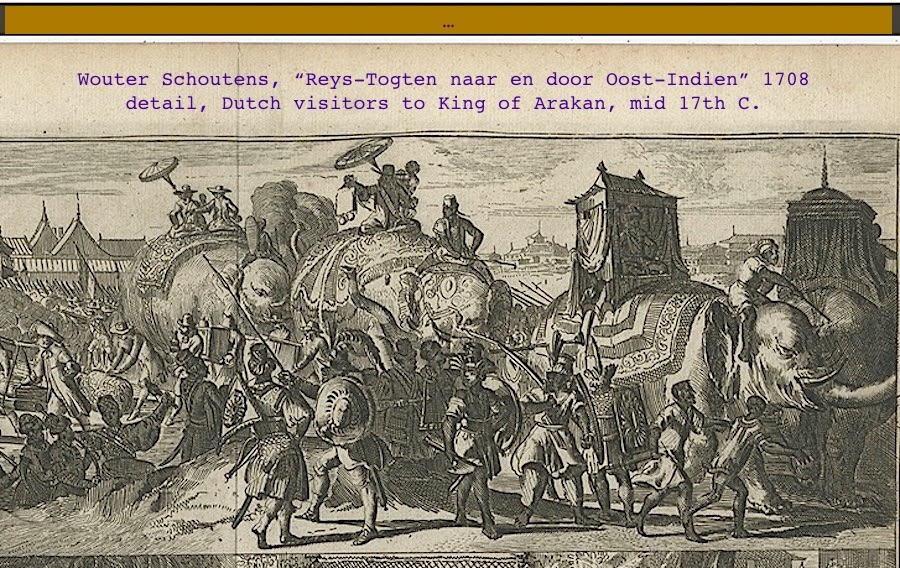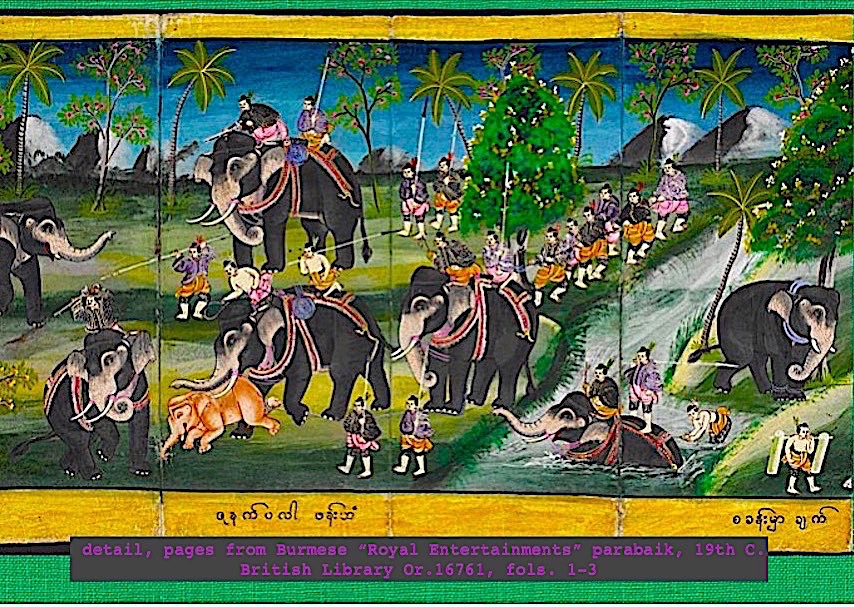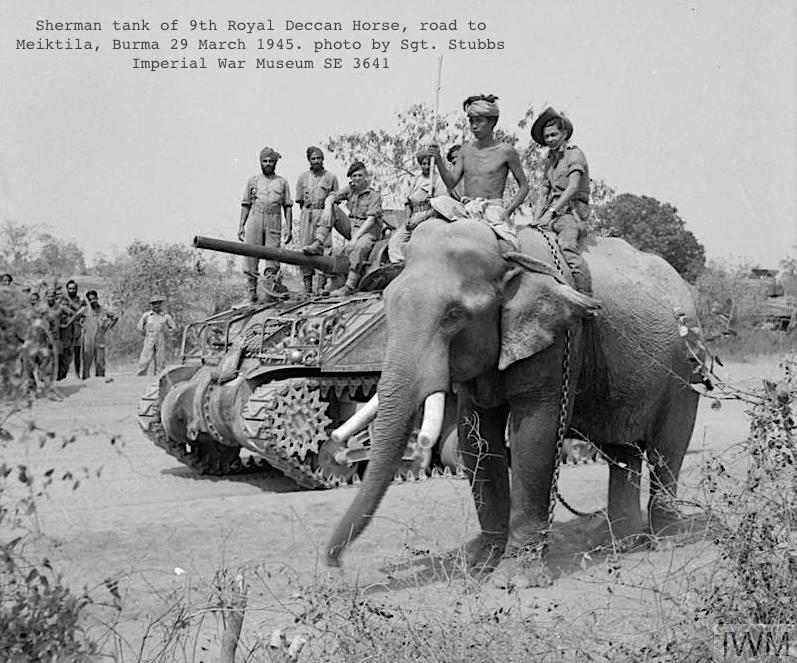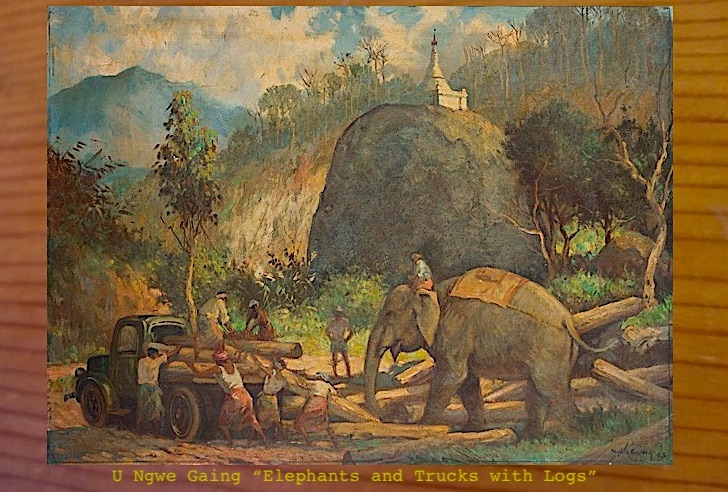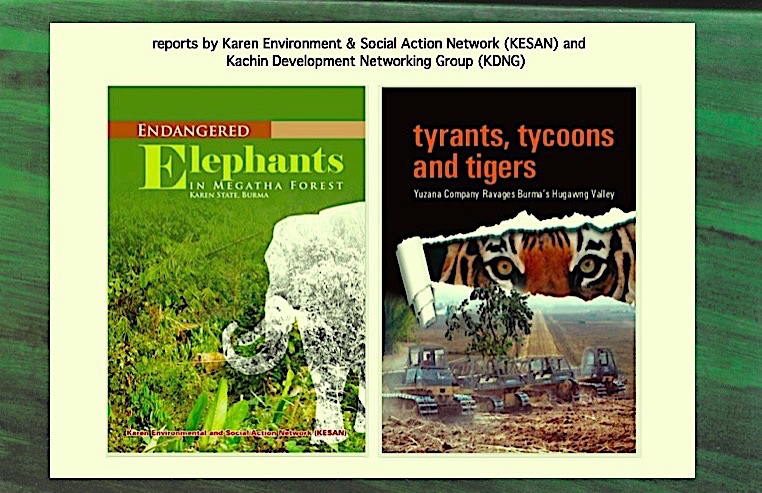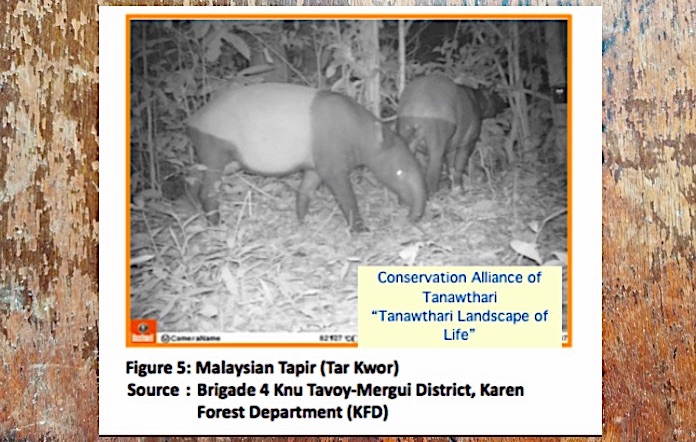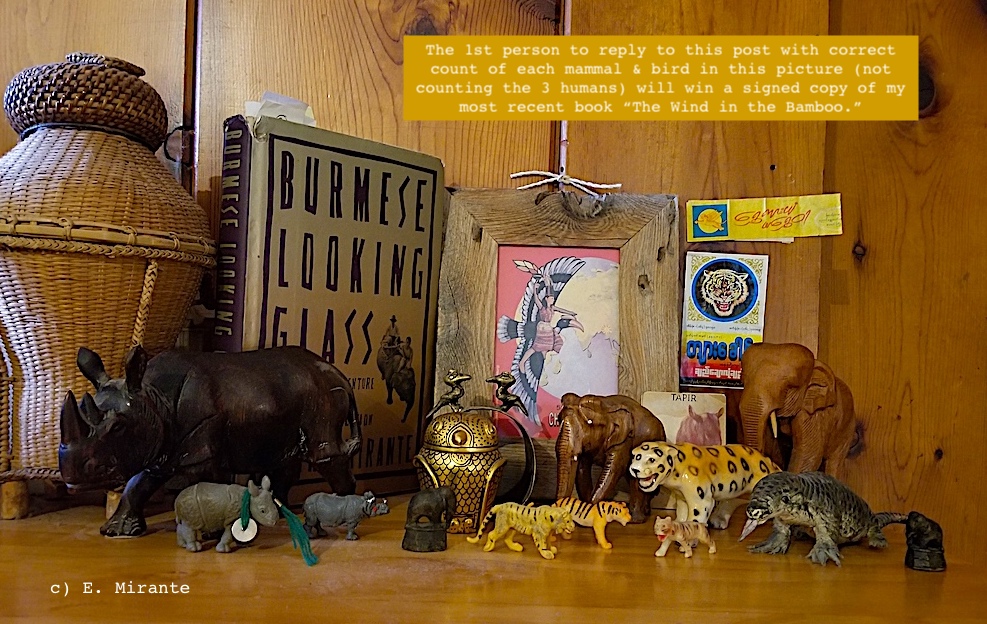1. This History Thread (with Zoology) is about #Wildlife in Burma (Myanmar.) Interactions of humans & wildlife: including ways that non-domesticated mammals, reptiles & birds have been and are commodified by trafficking and endangered by habitat loss. #tiger #elephant #pangolin
2. The independent peoples whose lands would be conquered by kingdoms and/or colonized to become known as Burma possessed enormous expertise about nature and a variety of belief systems which often showed reverence for wild animals as well as well-founded fears about them.
3. Hunting traditionally provided food + utilitarian & ritual items. Wild animal products including tusks, horns, skins, feathers were traded among lands that would become Burma and exported as luxury goods to China, India & beyond from maritime kingdoms like Arakan and Pegu.
4. Since medieval times wild elephants have been captured in Burma for moving heavy loads, transportation & warfare. They're not really domesticated (not selectively bred.) Elephants served in WW2 Burma & Kachin Independence Army elephants still carry military supplies in north.
5. British colonists saw Burma wildlife as “machinery” (logging elephants) & recreation (relentless tiger hunting: 1,382 killed 1928-32.) Orwell story used "Shooting an Elephant" as imperialism trauma metaphor. Fascinating “beasts/Burma/British” blog: https://colonizinganimals.blog/
6. Late 20th C. Burma/Myanmar under military rule had severe forest loss. Wildlife trafficking Myanmar to China & Thailand as medicinal/luxury goods rose to appalling levels. Continued with border markets selling endangered species products & live animals. https://www.theguardian.com/environment/2014/jul/21/-sp-endangered-species-on-sale-along-burmachina-border
7. Myanmar has had weak enviro laws/enforcement. Efforts to protect wildlife involve NGOs, INGOs, Ethnic Armed Organizations, individuals. Wildlife preserves/parks often controversial due to collaboration with military, “only on paper” status, displacement of #Indigenous  people.
people.
 people.
people.
8. Elephants (emblematic of Burma) are killed for their skin: bogus “medicinal” trade. Est. <2,000 wild elephants + about 5,000 captive/worker elephants in Myanmar. Habitat loss severe. Need new efforts for coexistence, solutions for “unemployed” elephants https://www.pbs.org/newshour/science/skin-poaching-asian-elephants-myanmar-blood-beads
9. Tigers now down to just est. 50-100 (2 species) in Myanmar. Critically endangered by China medicinal trade, prey decline, habitat loss: logging, mining, plantations. Much hyped Hukawng Valley “tiger reserve” has no tigers. Last 2 habitats “fragmented.” https://www.mmtimes.com/news/tiger-conservation-faces-challenges-myanmar.html
10. Wild cats of Myanmar also include leopards, golden cats, marbled cats, clouded leopards, jungle cats, leopard cats. Critically endangered mammals include red pandas in Himalayan foothills and heavily trafficked Sunda pangolin & Chinese pangolin. https://myanmar-now.org/en/news/across-myanmar-pangolins-are-trafficked-in-plain-sight
11. Dhole, endangered wild dogs survive in a few areas of Myanmar. Myanmar's Himalayan black & Sun bears vulnerable to habitat loss & killed for China medicine trade which also leads to bears cruelly held captive for their gallbladder bile to be drained. http://www.mmtimes.com/news/experts-call-urgent-action-protect-myanmar-bears.html
12. Myanmar primates incl. Phayre's leaf monkey (endangered), endangered langurs, endangered hoolock gibbons, vulnerable & common macaques, endangered Bengal slow loris. Myanmar snub-nosed monkey critically endangered, probably also newly ID’d Popa langur. http://www.rainforesttrust.org/new-national-park-protects-critically-endangered-monkey-in-myanmar/
13. Endangered Irrawaddy dolphins still help some Myanmar fishing communities with their catch. Feb. 2020 Myanmar survey counted 79, 5 dead since. Threats: mining, pollution, erosion, illegal electro-fishing, aquarium capture, fishing net accidents. https://coconuts.co/yangon/news/save-these-adorable-things-public-demands-after-deaths-of-irrawaddy-dolphins/
14. A few Sumatran rhinoceros in Myanmar til 1990s. Likely extinct or nonviable in country now. Large forest-dwelling ungulates gaur, banteng, Malay tapir populations unknown Myanmar; gaur & tapir photos 2017-20. Conservation Alliance of Tanawthari report: https://www.accountabilitycounsel.org/wp-content/uploads/2020/05/5-22-20-landscape-of-life.pdf
15. Myanmar goat/antelope related mammals include takin, serow, goral. Deer include sambar & small muntjacs & hog deer. Endangered Eld’s deer (golden deer) in small numbers in central Myanmar, "protected" habitat threatened by deforestation and drought. http://www.frontiermyanmar.net/en/golden-deer-threatened-by-record-heat-and-an-army-land-grab/
16. Bamboo flowering causes rat population surge every 48 years: Mautam famine (2006-08 last one.) Recent years unrelated rat surge in Karen State. Myanmar has many bat species. Novel coronaviruses found in some, but bats are beneficial & need protection.
17. Reptiles of Myanmar are much trafficked (Burmese pythons famously went from coveted pet to invasive species in far away Florida.) Critically endangered tortoises frequently trafficked, suffer habitat loss. Saltwater crocodiles survive in delta wetlands http://www.frontiermyanmar.net/en/fishing-communities-risk-crocodile-attacks-in-the-ayeyarwady-delta/
18. Burma/Myanmar has always been a birdwatcher’s dream, with 1,100+ species. But habitat loss, pollution, hunting threaten many species including Gurney’s pitta, hornbills (symbol of Chinland), vultures, waterfowl & shorebirds like spoon-bill sandpiper. https://news.mongabay.com/2020/01/rediscovered-after-100-years-gurneys-pitta-is-in-peril-once-again/
19. Myanmar scientists, NGOs work on wildlife issues but enviro defenders often in danger. Govt & INGOs must consult, respect local people. Indigenous people seek to protect wildlife from logging, mining, plantations. @KESAN_KAREN video Salween Peace Park:
20. Recent news: Myanmar govt permitting/promoting commercial captive breeding of rare mammal, reptile, bird species for display & other purposes. This can increase wildlife product demand, abusive tourism, potential zoonotic (animal to human) disease risk https://www.nytimes.com/2020/07/15/world/asia/myanmar-wildlife-breeding-plan.html
21/21. Sources incl. @Jonathan_Saha blog, @VickiCroke 2014, @JacobAShell 2019. Thanks @Kevin_M_Woods & Faith Doherty! @ICCAConsortium supports Indigenous & Community Conserved Area efforts in Myanmar. Links to my previous Burma History Threads & reports at http://www.projectmaje.org

 Read on Twitter
Read on Twitter